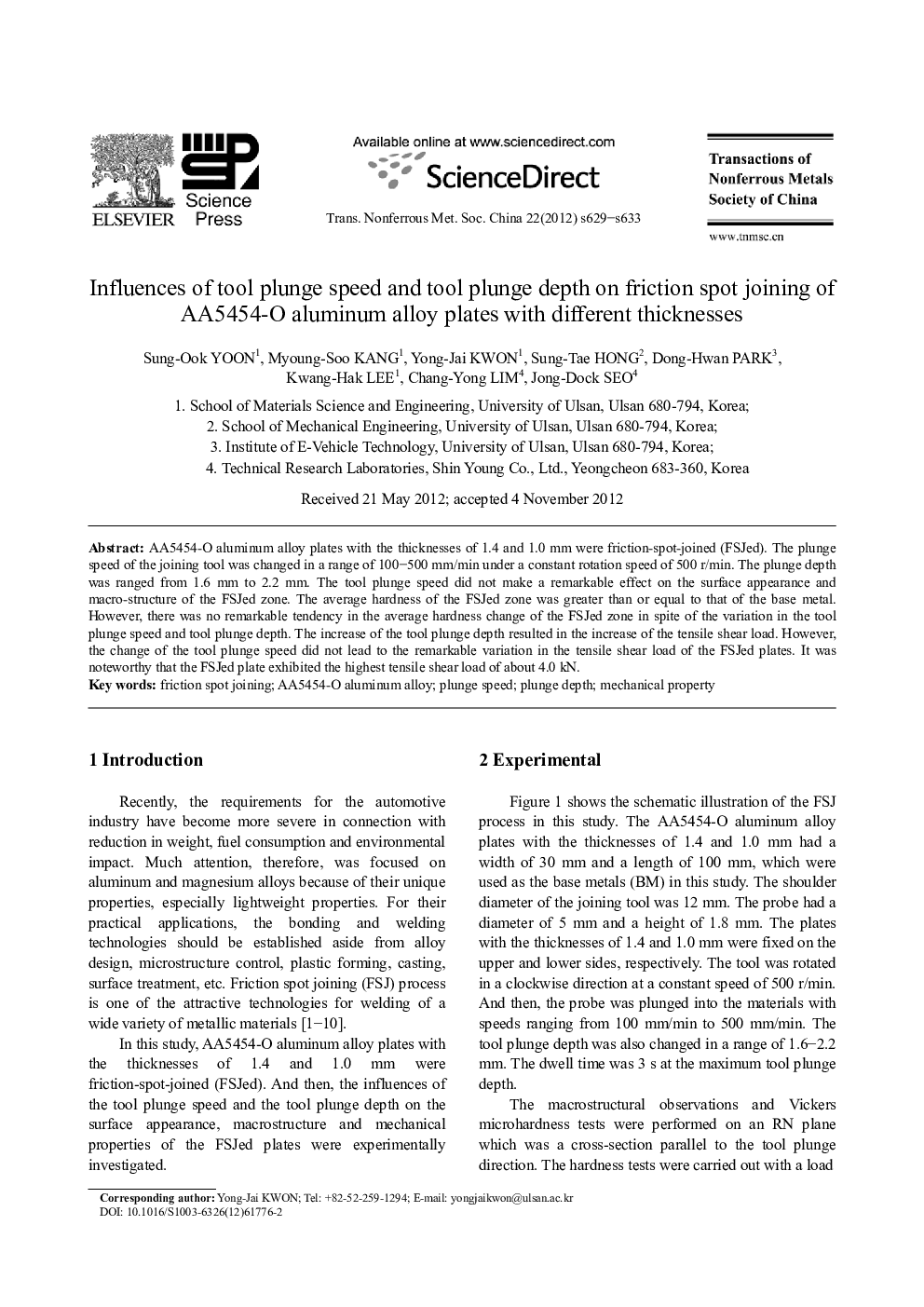| کد مقاله | کد نشریه | سال انتشار | مقاله انگلیسی | نسخه تمام متن |
|---|---|---|---|---|
| 1637222 | 1516999 | 2012 | 5 صفحه PDF | دانلود رایگان |

AA5454-O aluminum alloy plates with the thicknesses of 1.4 and 1.0 mm were friction-spot-joined (FSJed). The plunge speed of the joining tool was changed in a range of 100–500 mm/min under a constant rotation speed of 500 r/min. The plunge depth was ranged from 1.6 mm to 2.2 mm. The tool plunge speed did not make a remarkable effect on the surface appearance and macro-structure of the FSJed zone. The average hardness of the FSJed zone was greater than or equal to that of the base metal. However, there was no remarkable tendency in the average hardness change of the FSJed zone in spite of the variation in the tool plunge speed and tool plunge depth. The increase of the tool plunge depth resulted in the increase of the tensile shear load. However, the change of the tool plunge speed did not lead to the remarkable variation in the tensile shear load of the FSJed plates. It was noteworthy that the FSJed plate exhibited the highest tensile shear load of about 4.0 kN.
Journal: Transactions of Nonferrous Metals Society of China - Volume 22, Supplement 3, December 2012, Pages s629-s633